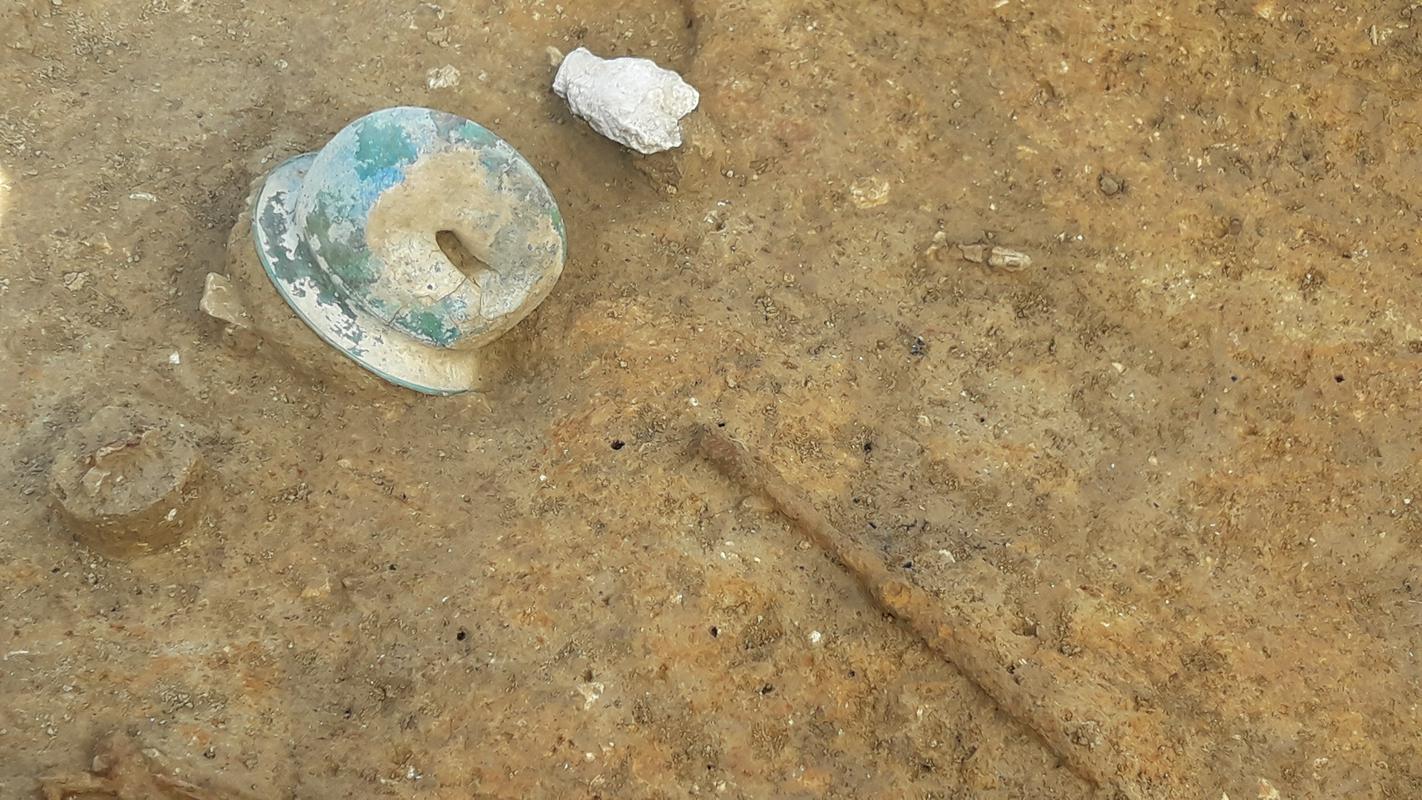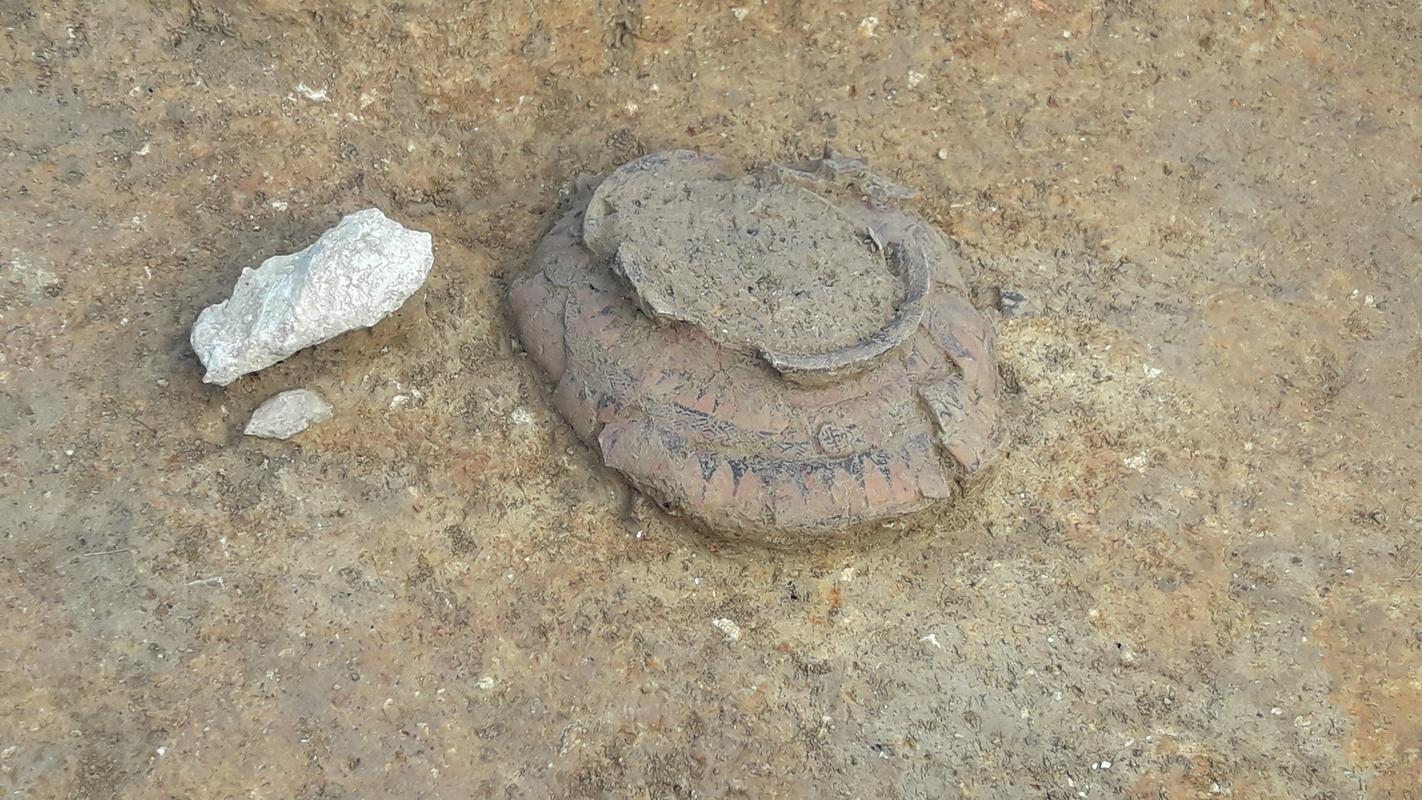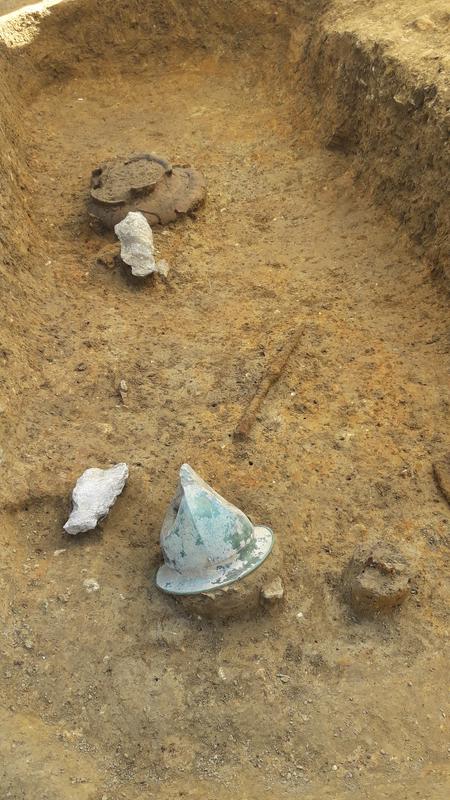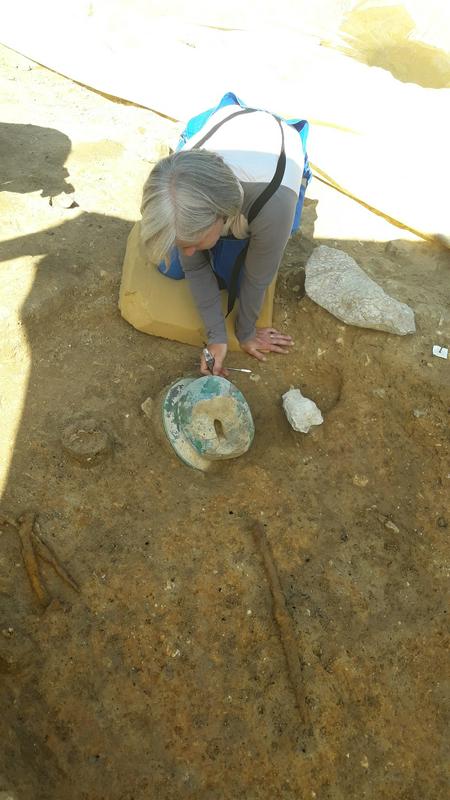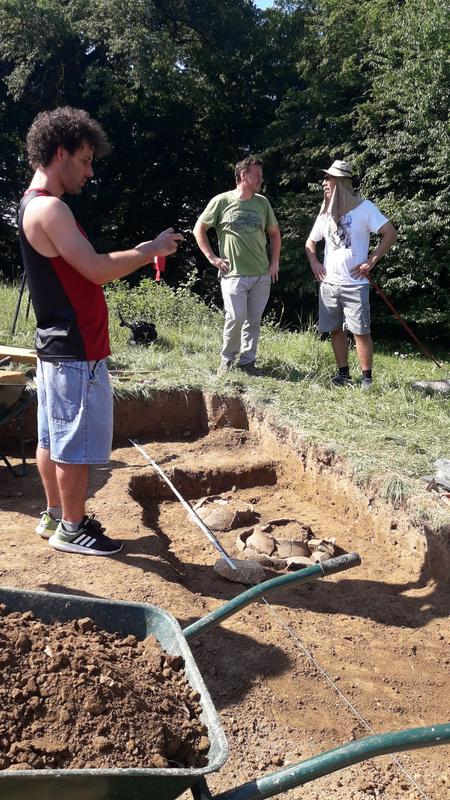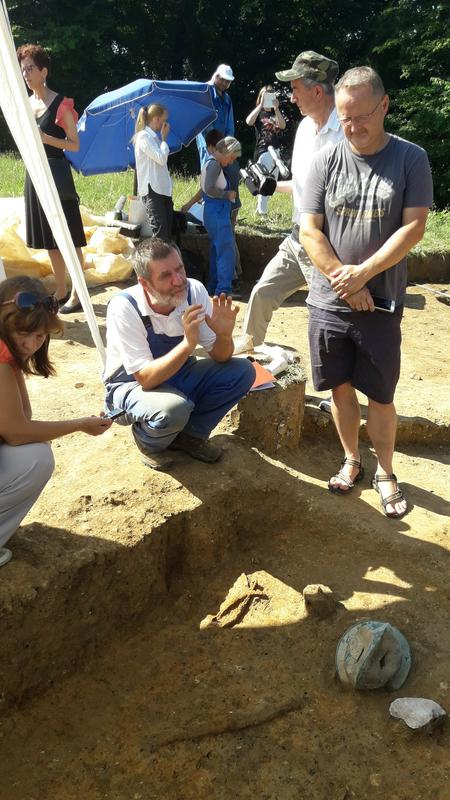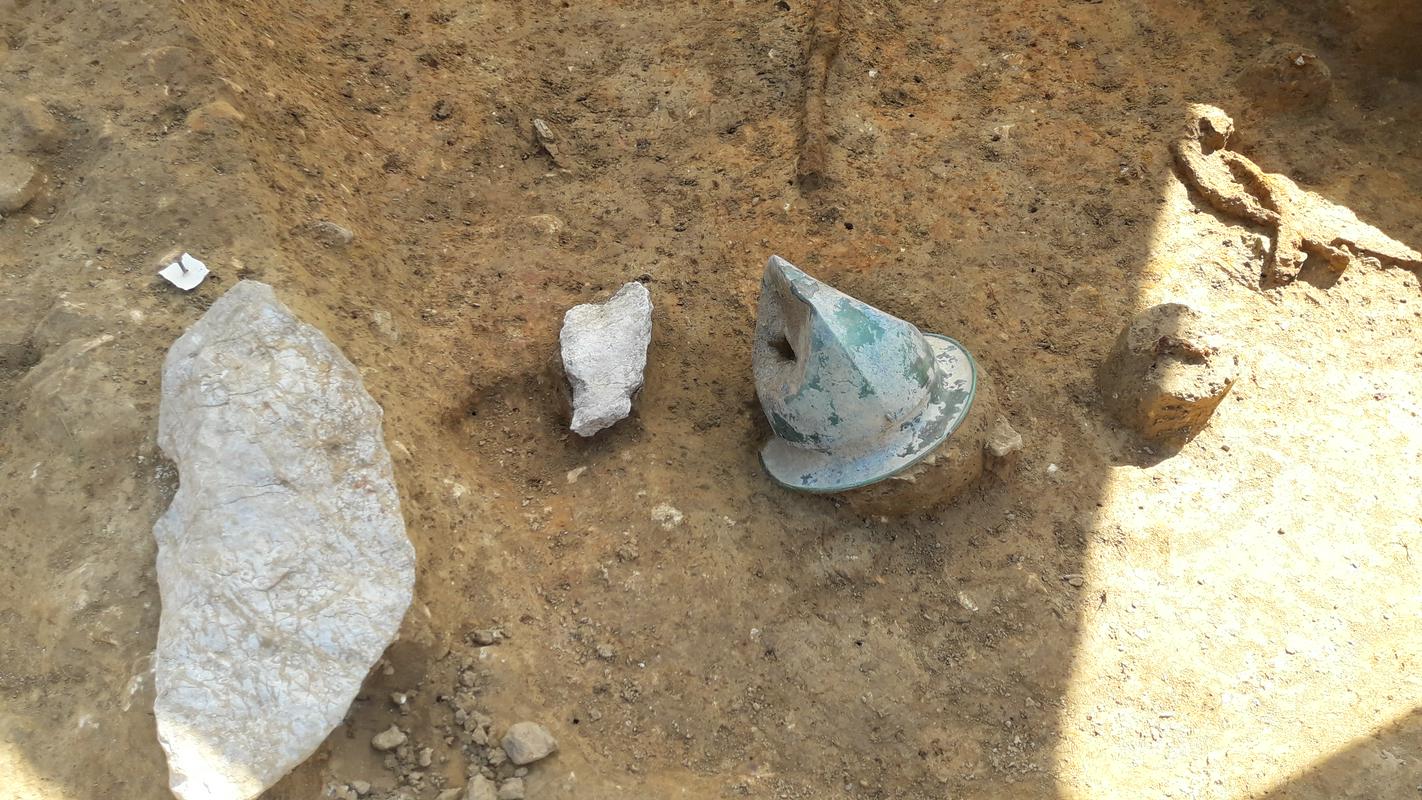

The archaeological team of the Dolenjska Museum from Novo mesto has come across the find after a good week of this year's research at this internationally known site.
Archaeologists surprised by the size of the grave
Borut Križ, the excavation leader and the curator of the Dolenjska Museum, said that they were surprised by the quite large grave, which was located near the centre of the mound number 66 and belongs to the 4th century BC, i.e. at the end of the so-called Hallstatt cultural period and the earlier Iron Age.
He also said that the grave certainly belonged to a prince and contains a ritually-damaged bronze helmet, while smaller additions include the so-called Apulian crater, which was painted and probably imported from the southern region of the Apennine peninsula, or vessels inspired in their design by Apulia.
According to Križ, more such helmets have been excavated at prehistoric cemeteries in the area of Novo mesto. Archaeologists assume they were all damaged during the burial ritual.
33 years of continuous excavation
So far, almost 2,300 prehistoric graves have been explored in this area. Over the past 33 years, since the continuous excavation work started, about 330 graves from the late Bronze Age have been discovered. 66 excavated prehistoric mounds include about 1,200 graves from the Early and over 750 planes from the Late Iron Age.
The archaeological site at Kapiteljska njiva (Kapitelj Field) is located in a former agricultural area, where the remnants of pest and weed control and fertilization have created a chemical mixture in the soil, which, in combination with acid rain, is corroding bronze and iron objects.




















































